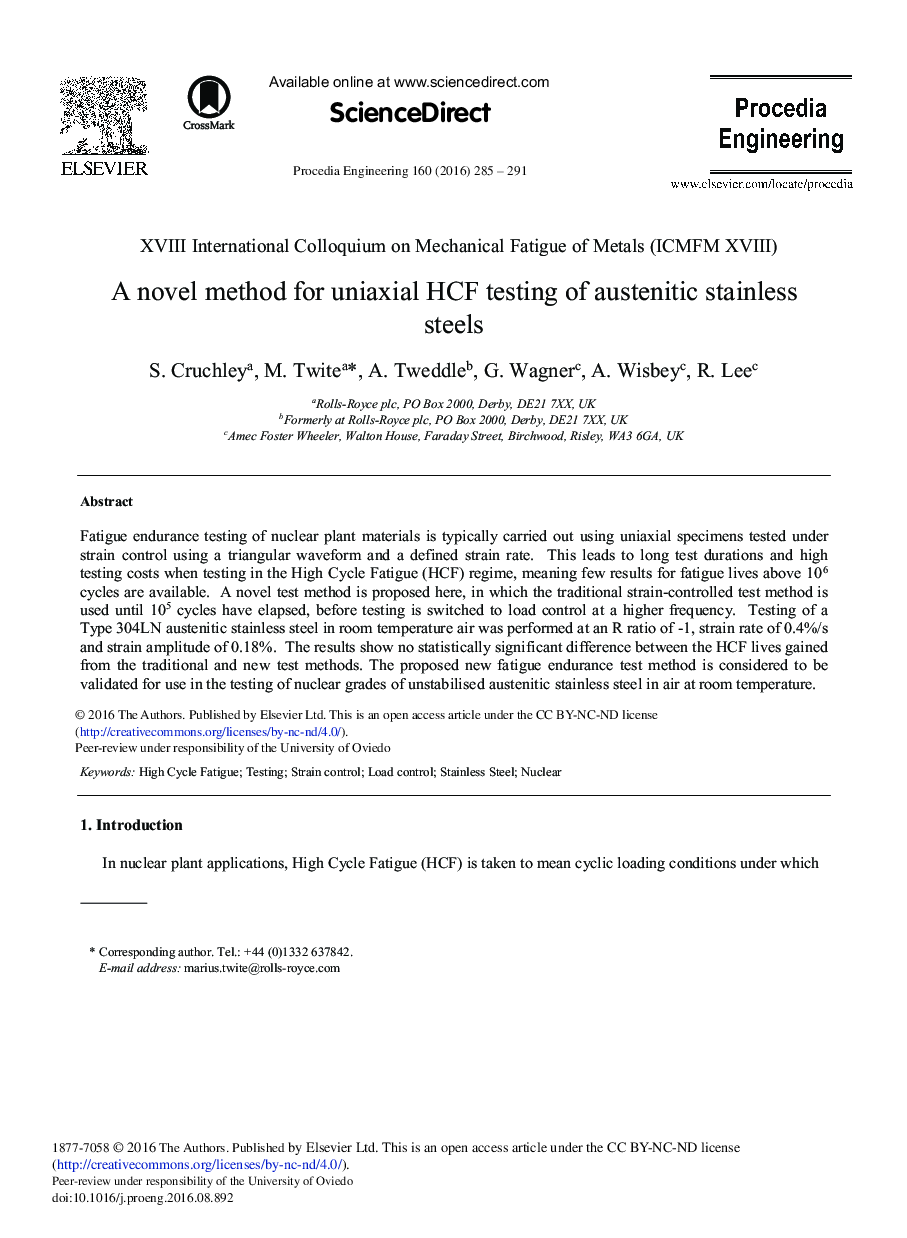| Article ID | Journal | Published Year | Pages | File Type |
|---|---|---|---|---|
| 5029442 | Procedia Engineering | 2016 | 7 Pages |
Fatigue endurance testing of nuclear plant materials is typically carried out using uniaxial specimens tested under strain control using a triangular waveform and a defined strain rate. This leads to long test durations and high testing costs when testing in the High Cycle Fatigue (HCF) regime, meaning few results for fatigue lives above 106 cycles are available. A novel test method is proposed here, in which the traditional strain-controlled test method is used until 105 cycles have elapsed, before testing is switched to load control at a higher frequency. Testing of a Type 304LN austenitic stainless steel in room temperature air was performed at an R ratio of -1, strain rate of 0.4%/s and strain amplitude of 0.18%. The results show no statistically significant difference between the HCF lives gained from the traditional and new test methods. The proposed new fatigue endurance test method is considered to be validated for use in the testing of nuclear grades of unstabilised austenitic stainless steel in air at room temperature.
